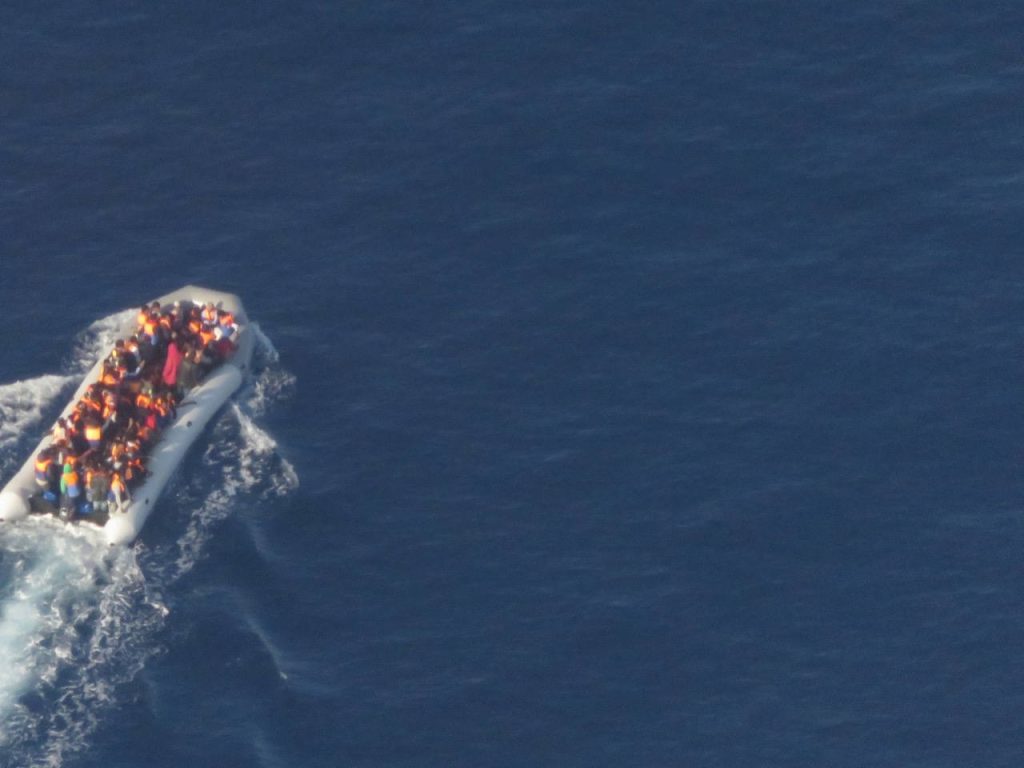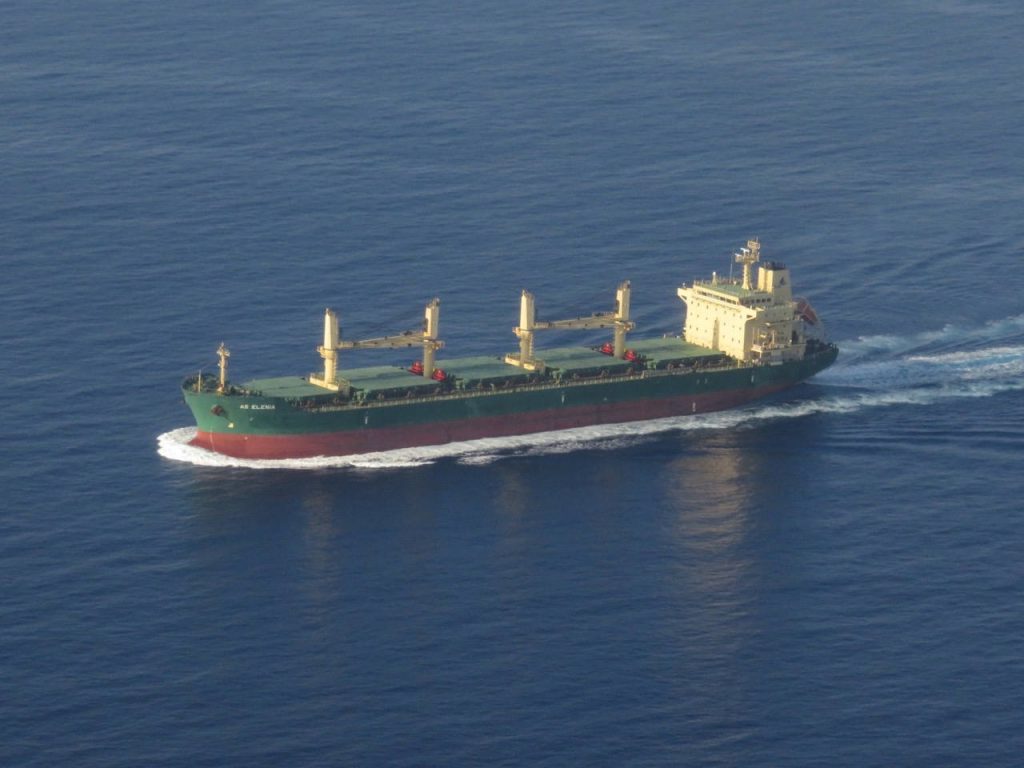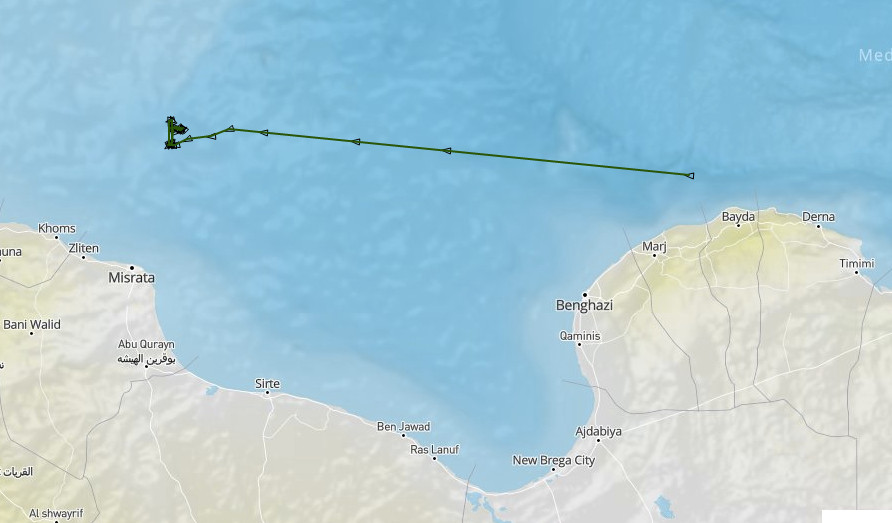How European authorities continue to use Migrant Death as Deterrent while criminalising Rescuers
A WatchTheMed Alarm Phone emergency case off the coast of Libya
The Easter weekend saw one of the biggest Search and Rescue (SAR) operations carried out in the Mediterranean Sea in the past few years, with 8,360 people rescued between Friday the 14th and Sunday the 16th of April 2017. The WatchTheMed Alarm Phone network was involved in 2 emergency cases and could observe first-hand both the sheer inadequacy of rescue efforts of EU authorities and the crucial contribution of non-governmental organisations (NGOs) in preventing instances of mass dying at sea, which we had to witness so often in the past.
One of the cases in which the Alarm Phone was involved, and on which the following report focuses, particularly stands out. On Easter Saturday, the 15th of April 2017, the Alarm Phone was informed about a boat in distress in the Central Mediterranean Sea. We spoke to the boat-people frequently, a group of approximately 100 travellers, over a period of more than 12 hours, before contact was lost. We passed on their pleas and demands for rescue to the responsible authorities and supported them throughout this difficult time. The situation was dire and dangerous, and required immediate action. But rescue was nowhere in sight and, as a result, the people on board were left in an extremely dangerous situation for one and a half days.
The Story of a near-Disaster in the Central Mediterranean Sea
It is on Saturday morning, at 7.19am, that Father Mussie Zerai informs our shift team about a boat in distress. According to the information in his possession, the boat had left Al Khums/Libya the evening before, and was thus located much further to the east of where most NGOs conduct their Search and Rescue (SAR) operations.
As per standard procedure, the shift team immediately tries to call the precarious passengers and communicates their GPS position and satellite phone number to the Maritime Rescue Coordination Centre (MRCC) in Rome. The Italian authorities reply that a SAR operation is ongoing, although, following our research, the presence of rescue assets in this area cannot be verified through vessel tracking websites.
From 9.40am onwards, we are in direct contact with the travellers, who call us frequently. They are worried and anxious, as they have been at sea already for the whole night. 20 children as well as 10 women, one of whom is pregnant, are among the approximately 100 travellers on board. In our log-book, our shift team notes:
11.34am: They called us again, they were really nervous […]. They say the boat is in really bad condition, they are taking water out, but it gets worse, water is coming in, they don’t have much petrol anymore, they were begging me really hard to help them, I told them that a ship is looking for them.
Over the following hours, we continuously recharge the credit of their satellite phone, receive updated GPS positions and pass them on to MRCC Rome. The authorities state that they are looking for a vessel that could conduct a SAR operation. However, we then observe how a cargo ship near the boat-people, the Lady Rasha, is doing some circling movements, obviously searching for the boat. But at about 1pm we realise that this ship stops the search and continues its route in direction of the Libyan port of Misrata. MRCC in Rome does not give any explanation to us, and no other vessel can be spotted in the vicinity.
In light of this, shortly afterwards, we reach out to the NGO Sea-Watch to enquire whether they might be able to conduct a search operation with their humanitarian plane Moonbird, which they operate together with the Swiss Humanitarian Pilots Initiative. In coordination with MRCC Rome, the crew decides to take off for their second flight that day. They reach the area of distress at around 2.50pm. At 3.10pm, we communicate again with the travellers – they are adrift at sea, with no plane or boat in sight. They scream for help, panic begins to spread.
Meanwhile, the Moonbird searches in different areas, flying patterns for more than two hours, yet unable to spot the boat in distress. It is during this period that the boat-people inform us that “there is no plane around, there is a ship very far, please ask them to help us”. According to vessel tracking websites, it seems to be the AS Elenia, a bulk carrier, flying the Liberian flag. We forward this information to the Moonbird, which attempts to re-direct its aerial search.
At 4.33pm, the boat-people yell out to us, “we see the plane, we see the plane”, but the crew of the Moonbird is still unable to find them. We can see how the AS Elenia moves toward the last GPS position provided by the travellers and at 5.25pm MRCC Rome confirms that they would give the AS Elenia the permission to conduct a SAR operation until the arrival of the Italian coastguards.
At 5.30pm, the Moonbird finally spots the boat-people. They forward the GPS position to MRCC Rome and also move in the direction of AS Elenia. Before heading back to Malta – as the plane is running out of fuel – the pilots signal the boat’s position to the crew of AS Elenia, which was not on direct course to the boat in distress. Via radio, they urge them to conduct a rescue operation, but the captain of AS Elenia hesitates to do so, following his account, due to security reasons.

Moonbird is finally spotting the boat-people (Photo: Moonbird Airborne Operation / www.sea-watch.org, www.hpi.swiss )
At 6.14pm, seeing the AS Elenia approaching them, the boat-people await rescue. Yet, at 6.22pm, they call us again, realising that AS Elenia simply passes by. They say: “The big boat did not stop, please call them, please help us, the big boat is moving and we have no fuel, we can’t follow the big boat.”
We reach out to MRCC Rome and inform them that AS Elenia is not stopping but instead continuing its course straight westward, apparently ignoring the boat-people’s distress situation. MRCC appreciates the information but refuses to give us any further details.
At 7.08pm, about 45 minutes later, we observe how the AS Elenia changes course, and heads north, diverting from their set course (their port of destination was Gabes in Tunisia) but also moving away from the migrants’ boat.
At 7.20pm, the boat-people tell us that their satellite phone is running out of battery. About twenty minutes later, they see the AS Elenia return, only to shortly afterwards see it turn around again. 1

The bulk carrier AS Elenia passing by (Photo: Moonbird Airborne Operation / www.sea-watch.org, www.hpi.swiss)
More desperation spreads among the people.
About an hour later, MRCC Rome suggests that AS Elenia is not allowed to rescue unless the boat is in direct danger, which for them seems to mean capsizing. The bulk carrier disappears from the people’s sight.
The travellers’ engine does not work, and water keeps entering their boat.
At 8.59pm, we receive their updated GPS position for the last time. In conversation with MRCC Rome, the authorities state that they have instructed the AS Elenia to return and check on the situation. If the boat-people are in danger, the crew has to rescue immediately.
In our log-book, our shift team notes:
9:52pm: [The boat-people] picked up the phone, they are yelling (hard to understand), they say they are in danger and the big boat is next to them but the rescue did not start yet. I told them to not panic and try to keep calm and tell them to call me again if anything changes.
This was our last direct exchange with them. Afterwards, no contact could be established again, and we did not receive any update from MRCC Rome for more than 1 1/2 hours. Only at 11.20pm, MRCC Rome informs us that they requested the AS Elenia to conduct a rescue operation, but that the crew is not equipped to do so. The Italian authorities state that the crew would monitor the situation until the next morning, when another SAR vessel would reach the location.
In fear that the boat-people might not survive another night at sea, we contact MRCC Rome later again. Past midnight, they tell us that the captain of the AS Elenia would not carry out a SAR operation but stay in stand by and provide water and food to the boat-people. MRCC Rome then informs us that for the next morning the Norwegian Frontex vessel Siem Pilot and later the tanker Yara Sela were ordered to the area of distress.
While unable to speak to the boat-people over night, we see that they still make distress calls the next morning – the credit of their satellite phone continues to decrease.
At 9.49am, MRCC Rome states that the boat-people would be rescued by a military vessel and that the SAR operation would be coordinated by Malta. Over hours and several exchanges with the authorities, Malta finally confirms at 1.37pm that the people have been rescued by the Frontex vessel Siem Pilot.
Contesting Maritime Abandonment
The boat-people involved in this ordeal were at sea for more than one and a half days. For over 24 hours, their distress case was known to the authorities and yet they could not be rescued as no ship equipped for such an operation was available. In this sense, this case exemplifies how despite the coordinating efforts of MRCC Rome, the number of rescue assets present in the area was utterly insufficient.
This absence of rescue forces in the most dangerous area of the deadliest borderzone of the world, however, is not a coincidence. Nor can it simply be attributed to a particularly exceptional situation, considering that the simultaneous departure of tens of boats from the Libyan coasts has been, for several months now, a relatively frequent event. It is instead the result of precise political decisions taken by the EU and its Member States, which first deny migrants legal ways to enter Europe, thus forcing them into the sea, to then consciously limit the presence of rescuing assets, hoping that mass dying would act as a deterrent.
While this ‘tactic’ has, in the past, led to massive losses of lives at sea – such as on the occasion of one of the deadliest shipwrecks ever registered in the Mediterranean, which took place exactly two years ago, claiming more than 1,200 lives in less than a week – the tireless rescuing efforts of civil society actors and activists have played a crucial role in averting the repetition of such a scenario. Over the Easter weekend 2017, they ensured that the boat-people we supported, and thousands more, could miraculously survive. In the case we have documented, the intervention of the humanitarian plane Moonbird was pivotal in finding the migrants’ boat and indicating its location both to the AS Elenia and the MRCC. Other NGOs worked at their very limits, struggling to prevent numerous shipwrecks. The crew of Migrant Offhore Aid Station (MOAS) alone rescued more than 1,500 people from 9 precarious boats, and took hundreds on board of their vessel Phoenix. The rescue vessel Iuventa of the NGO Jugend Rettet similarly took hundreds of people on board. Unable to navigate, they were even forced to send off a MAYDAY call on Sunday. Fortunately, they could successfully complete their SAR operation and safely return to Malta. Beyond that, commercial vessels are again increasingly involved in rescue operations. At the Easter weekend, one cargo vessel took more than 1,000 people on board, while the German association of ship-owners confirmed to us via email that it demands enhancing rescue capacities and endorses equipping commercial vessels accordingly.
Yet, despite these crucial contributions, NGOs and activists have become, over the past months, the object of a heinous smearing campaign. They have been accused by Frontex, EU politicians and Italian prosecutors not only of being involved in criminal activities, allegedly colluding with smugglers operating in Libya, but also of having made the crossing of the Mediterranean deadlier. These attacks, while baseless and cynical, follow the flawed logic of using migrants’ death as a deterrent to future sea-crossings. They intend to undermine the indispensable work of the NGOs, seeking to force them out of the deadliest area of the Central Mediterranean Sea.
Our emergency case and the events on the 2017 Easter weekend thus raise a range of disturbing questions:
- Given that the highly unstable and harrowing situation for migrants in Libya has been known for years, and in the anticipation of thousands wanting to and needing to escape, why have we not seen an increase in rescue capacities at sea?
- In light of the above case and more generally the situation off the coast of Libya over the Easter weekend, where were the European assets that do exist in the Mediterranean Sea? Especially, where were the assets of the military operation Eunavfor Med? The limited, late and seemingly reluctant engagement of some assets do not alter the fact that Eunavfor Med and also Frontex’ Operation Triton chose to remain largely unavailable for Search and Rescue operations, as many of the NGOs, and other organisations, have criticised.
- Moreover, given the fact that hundreds, if not thousands, would have lost their lives at sea, had it not been for the SAR operations of the NGOs, how is it possible that smearing and criminalisation campaigns by Frontex, EU politicians and Italian persecutors continue?
The WatchTheMed Alarm Phone demands an immediate end of these attacks against humanitarian actors and an increase in rescue capacities at sea, to support their necessary work. At the same time, we are well aware that precarious forms of sea-migration will always remain risky, regardless of how many rescue forces stand ready to help.
- We therefore demand a radical break with current EU migration policies that have caused the phenomenon of sea-migration, and mass drownings, in the first place.
- We demand the opening of borders, and safe and legal passage, so that those fleeing can reach Europe without having to risk their lives.
- We call for the Freedom of Movement of All!
- Ferries not Frontex!
WatchTheMed Alarm Phone, April 21, 2017
1While we have not been in direct contact with the AS Elenia and thus cannot comment on their apparent reluctance to operate rescue, we know that past rescue attempts by large cargo ships have resulted in tragedies as those ships are not equipped to conduct SAR operations safely. At the same time, having spoken to the migrants several times, we could witness how the ships’ comings and goings led to acute desperation and agitation on the boat.

